Apollo 14 and Venus
Apollo 14 used its DAC camera to take a series of exposures of gegenschein regions, taking exposures of varying lengths.
At the time of writing, the magazines on which these images were taken are not available.
There is another claim to fame for Apollo 14 photography however, in that some smart detective work revealed the presence of Venus in an Earthrise sequence from magazine 66, and in several black & white images in magazine 64.
The Earthrise sequence has been discussed on my own website in the context of weather patterns observable in the Earth images, and my analysis of this puts the time of this Earthrise at around 08:30 GMT on 05/02/71 (roughly 20 minutes after the start of orbit 12). This document on the ALSJ identifies Venus in the Earthrise sequence, and its location is entirely consistent with that timing. The images below show my own interpretation of this, with Stellarium’s depiction of Earth and Venus at the same time compared with a correctly oriented Apollo images. I have enhanced the brightness of Venus to make it more obvious, and the reader is referred to the ALSJ document for the originals.
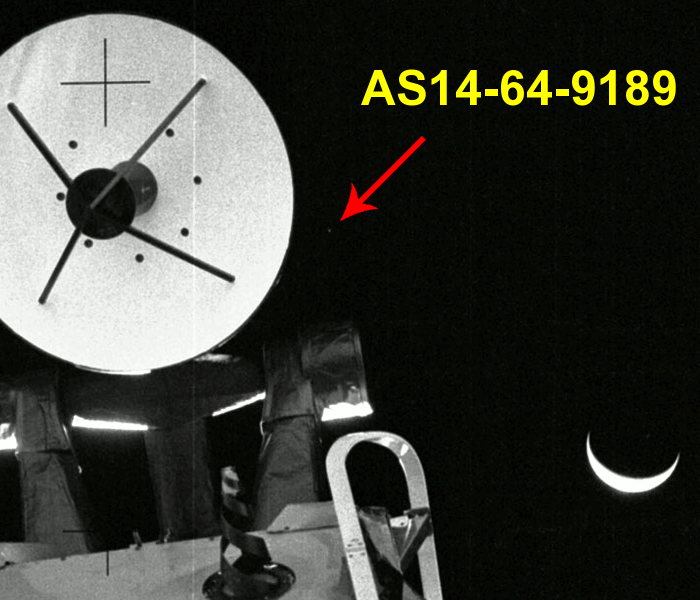
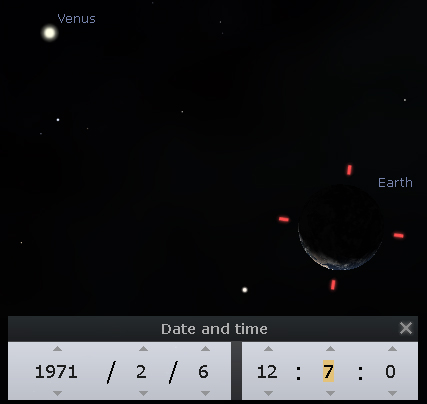
The image above left is from the ALSJ site and is based on original by an Apollohoax.net contributor.
It’s worth noting that the change in position of Venus relative to the Earth is entirely consistent with what all the astronomy software packages say should happen.
The photographs were taken at the end of EVA 2 at the foot of the LM ladder, which is why we can be sure about the time.
Why bring them up here? Well, there is another series of photographs of Earth taken from inside the LM once the two astronauts were safely back inside. They aren’t discussed much when Venus and Apollo 14 are mentioned, and I wanted to see if it could be found in these photographs as well.
The images in question are from magazine 66, and they occur after views of surface equipment that are obviously taken from the LM. The conclusion in the ALSJ is that, thanks to evidence from differences in the shadows of the ALSEP, these photographs were taken after the ones shown above. There is, however, no discussion in the transcripts of any cabin photography, and no times are given in the official record.
So the questions here are: Can we see Venus, and when were these photographs taken?
The 6 photographs are AS14-
Below are close ups of Earth in these high resolution versions.
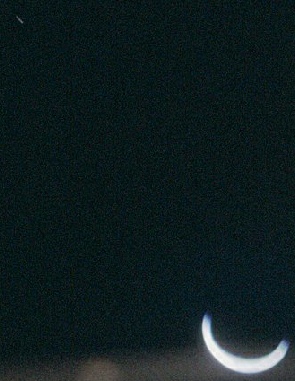
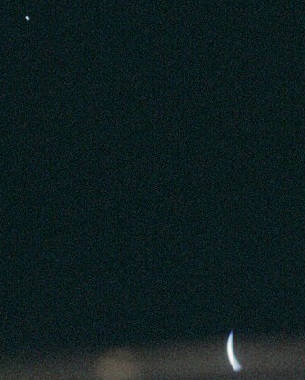
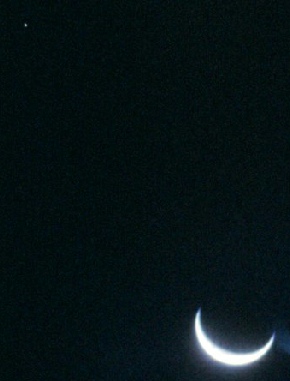
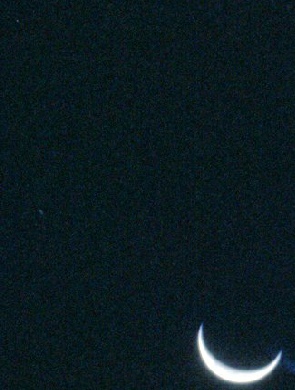
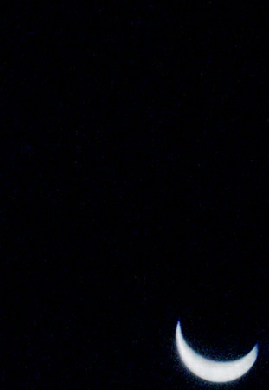
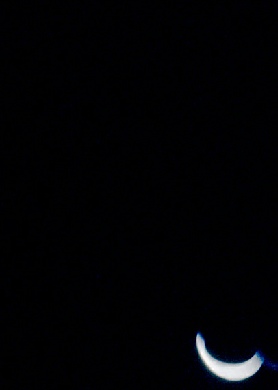
In the first image, 9327, there is a bright line in the top left, This is interesting given that Earth is blurred, and it could be that this is Venus showing with the effect of camera shake. Certainly the next two, 9328 & 9329, have a clear sharp object in the same part of the photograph. There is a suggestion of this same object in 9330, but the latter two show no sign of it -
Can we be certain that this bright object is genuinely there, or some blemish on either the image or the scan. Most Apollo images showing black skies feature artefacts that are not real objects but these tend to show up as blue dots. A close up of the bright object from 9328 and 9 shows that it is not a single pixel problem:


So, this object is several pixels across and doesn’t exhibit the same features as the faults in photographs and scans that are present and it appears in exactly the same place in 4 successive photographs.
Is it in a place that fits in with the post-
What I’ve done here is take the Apollo image as a constant and then taken screendumps from Stellarium. I’ve rotated the Stellarium view and matched the ends of the Earth’s limbs as reference points. I’ve cut out the overlay so that Apollo’s Venus can be seen more clearly.
Apollo 14 lifted off from the surface at 18:48 GMT on 06/02/71, and comparison of one of the Stellarium’s view at that time with 9329 shows that this would have been later than the original photograph (below left). If we are certain that the photograph was taken after EVA 2, then Venus should be higher than 12:07, which indeed it is (below right). So it must be somewhere in between, but when?
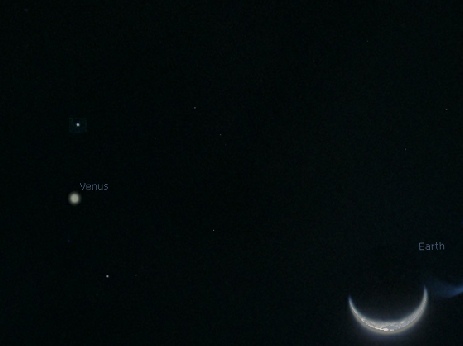
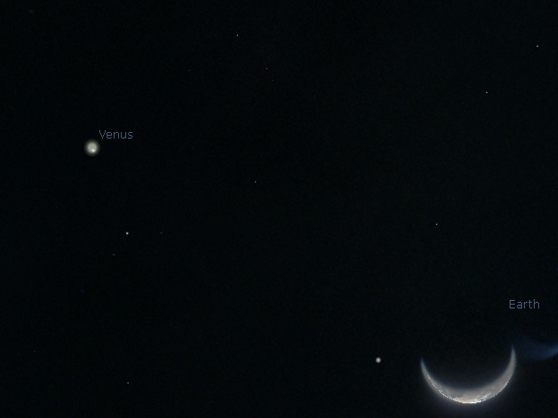
My suggestion for a time would be sometime between 14:30 and 15:00. Before 14:30, the transcript makes it clear that they are busy in post-
If I’ve got it right, Venus is in the right place to at that time. It helps to confirm that the photographs were indeed taken after EVA 2, and that the photographs were taken from the lunar surface and that once again the official record of events is entirely accurate, consistent, and above all true.
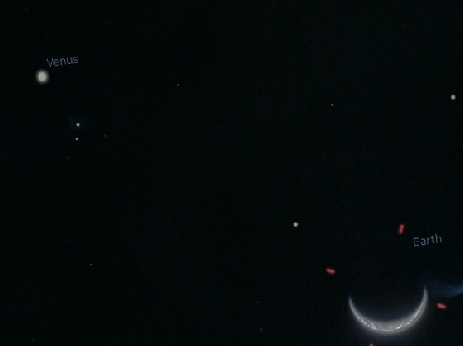
So we not only have an Earthrise showing weather patterns that match what should be visible at the time it was taken, an Earth crescent that matches what should be visible at the time it was taken, we also have Venus in the right place for when it was taken.
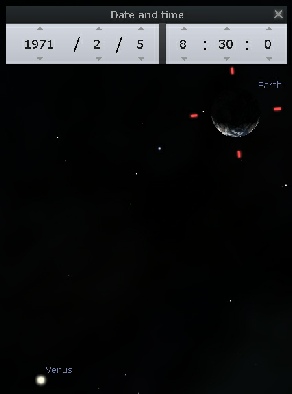
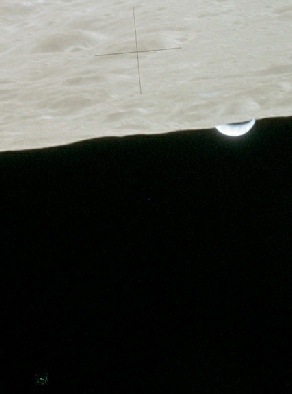
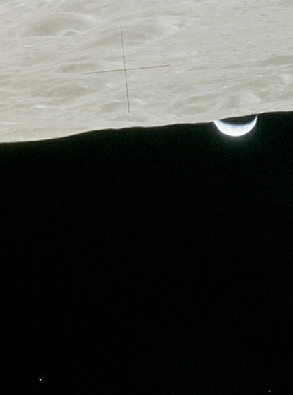
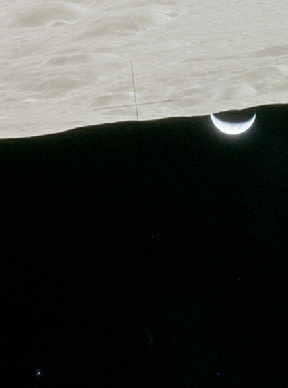
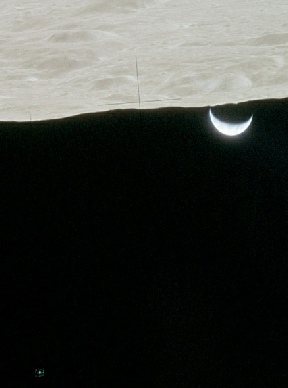
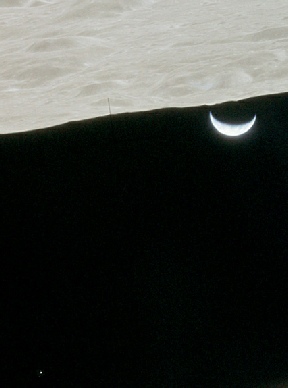
This discovery of Venus over the LM Antares has also been well documented, and there is little to be gained from re-
